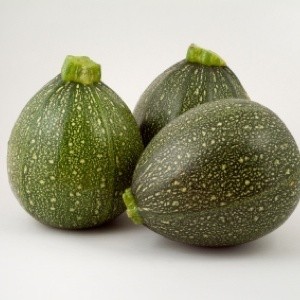
There are endless varieties of flowers, vegetables, and fruits to choose from each year, but only limited amounts of garden space. If you're looking for something new and different this year, consider one of the following three great plants. Each has a unique and valuable characteristic that makes it a useful contribution to the garden.
These are the heirloom hollyhocks your grandmother used to grow. Popular as far back as the 1700's, this striking hollyhock has only more recently come back into vogue. It was traditionally grown around the out-buildings (including outhouses) on Midwest farmsteads. Instead of asking where the outhouse was, it's been said that women of sophistication would simply look for the hollyhocks.
These lovely biennials produce a stalk of single flowers in a wide variety of colors and reach heights of 6 to 9 feet tall. When planted over successive years, hollyhocks seem like perennials because you get a new crop of flowers every year. The seeds are also easy to save (just let them dry in their pods on the stalk) and often self sow.
Not only do zucchini balls have a novel shape, but they are incredibly fun to grow. They have been popular in Europe for many years, in fact Italy, France, Holland, and Great Britain all claim their own unique varieties. Ball zucchini can be used in the same way as "normal" shaped zucchini-in salads, sliced, baked, steamed, stir-fried, or pickled-but because of their shape, they lend themselves particularly well to being "stuffed."
If harvested consistently, these compact plants will produce a prolific amount of fruits bearing a nutty, buttery flavor. Harvest them when they reach the size of a golf ball for a perfectly sized single serving, or when they grow to the size of a softball if you want to stuff them. To grow them, plant 4-6 seeds in hills spaced 3 to 4 feet apart and thin to the three hardiest plants. Like most vegetables, ball zucchini prefer full sun.
Goji berries are high in antioxidants and help strengthen our immune system. If you've ever priced them at a health food store, you've seen the jaw-dropping price they command per pound. That's because few plants are grown in the United States commercially. The berries themselves are juicy and sweet when eaten fresh, and taste similar to cranberries or dates when dried. They also make great juice, wine, and tea.
Goji plants grow from 6 to 10 feet tall and are self-pollinating. They produce trumpet-shaped white and purple flowers in the early summer (both colors on the same plant), but need to reach at least 3 years of age before producing any berries. Goji plants will require regular pruning to maintain a tidy shape and form, although letting them go will result in a lot more berries. Plant them in full sun in zones 5-9.

About The Author: Ellen Brown is an environmental writer and photographer and the owner of Sustainable Media, an environmental media company that specializes in helping businesses and organizations promote eco-friendly products and services. Contact her on the web at http://www.sustainable-media.com
Add your voice! Click below to comment. ThriftyFun is powered by your wisdom!
The spherical zucchini are fantastic! I grew them last year in Slovenia, A variety called Rondo Di Napoli, They were productive and tasty too. Just give them plenty of food. I p0lant mine straight onto the compost heap! They love it
Add your voice! Click below to comment. ThriftyFun is powered by your wisdom!